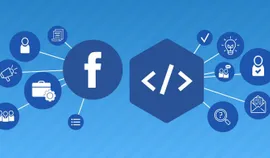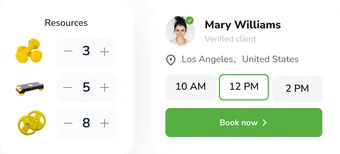Introduction
Your target group includes all customers you can address with specific services and products. However, it is a big mistake to define your target clients too broadly. Rough marketing segmentation leads to not knowing how to develop your business because you don't understand what problems your customers are facing and how exactly you could help them solve these problems.
That is why creating a professional target group analysis is an absolute must-have. But what do you have to consider? You will find an answer to this question in this article.
Determining target groups has several advantages. Your advertising is better designed. Therefore you address your target group in a personal and emotional way. Customer satisfaction increases, and customer loyalty improves. Also, you avoid wastage, increase the probability of a purchase and can use your budget with maximum efficiency.
Customer segmentation is an essential aspect of working with your customer base. Today's CRM systems offer many tools to help you with this process. EasyWeek, for example, has a handy tagging system that allows you to group your customers, target them and create newsletters efficiently. For more information, see our article on this topic.
Targeting is a large part of online marketing. In a nutshell, it tries to define the target group as precisely as possible so that the users see only relevant advertising.

Demographic and socio-economic characteristics of your target customers
Looking at the standard target group analysis, age, gender and place of residence are sufficient demographic characteristics.
Age. First, consider whether there is an age limit for your target group. Then select the age group you want to target within these limits.
Gender. To what extent can this criterion be considered relevant to your products and services? For example, if you are specifically targeting a female or male audience, how do you solve the issue of stereotypes?
Place of residence. Is it essential for your business to be centrally located and accessible to maintain contact with your audience? How attractive is your location from a customer perspective?
Marital status. Does your business appeal to families and couples or, instead, singles?
Socio-economic characteristics mainly include the target person's level of education and income.
Education. Is your product or service of interest to people from a particular background? Does it matter what kind of education your customer has?
Occupation. Is your product only of interest to certain professions? Or, more likely, can you identify the areas where your customers work more generally?
Income. What is the monthly budget available to your target person? Are you targeting people with an above-average income? Or is it more critical for you to have a connection to the middle class?

Psychographic characteristics
Psychographic characteristics represent the next, more complex level of analysis.
Interests. Does your target person have hobbies, and if so, what are they? Can your company cover specific areas of interest with its range of services?
Values. What values do you share with your customers? Do your customers' purchasing decisions depend on their values?
Desires. What goals and dreams does your target person have in life? What role can your company play in achieving these goals?
With the extensive possibilities of Facebook and Google, you will reach those users who best fit your description. This keeps wastage to a minimum.
However, there is another point partly related to these features but simultaneously allows us to move on to the next aspect: buying behaviour.
Motivation. Which social media channels does your target person prefer? Do some influences and aspects affect the consumption decisions of your target group?

Consumer behaviour and media use
If you have clearly defined the portrait of a customer based on the above characteristics, you already have a good foundation. However, it is now vital to understand the buying mechanism and what leads customers to you or prevents them from buying your product or service.
To analyse and influence buying behaviour, we use the following criteria:
Purchase motive
Brand preferences
Purchase frequency
Point of sale
Time of purchase
Almost all of these can be tracked by automated systems that record each purchase stage. However, determining motives (as well as price sensitivity) must be dealt with individually. You can use simple email surveys to do this, or you can create more practical Facebook and Instagram surveys. However, this depends on your target audience.

Conclusion
In general, target group analysis is about defining the customer and his problem. You can therefore ask the following questions:
How do I name my target group?
What are their demographic, socio-economic and psychographic characteristics?
What is their buying behaviour?
What problems, needs, and desires does my target group have?
What solutions could my company offer this target group?
With EasyWeek software, you can collect information about your customers, view practical customer statistics and analyse their buying behaviour. EasyWeek's functionality makes it easier to manage and develop your business.
Test the system 14 days free of charge!















